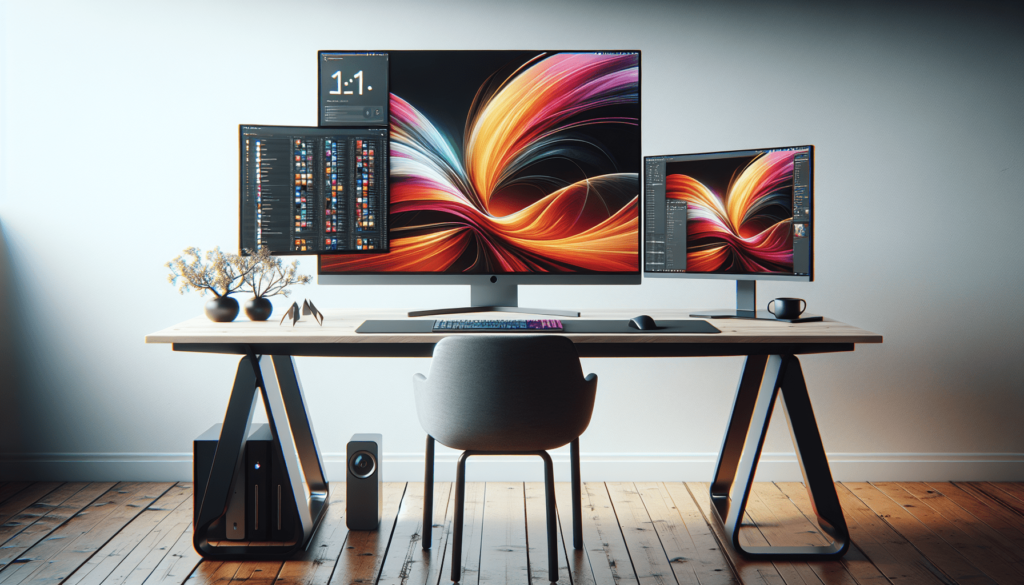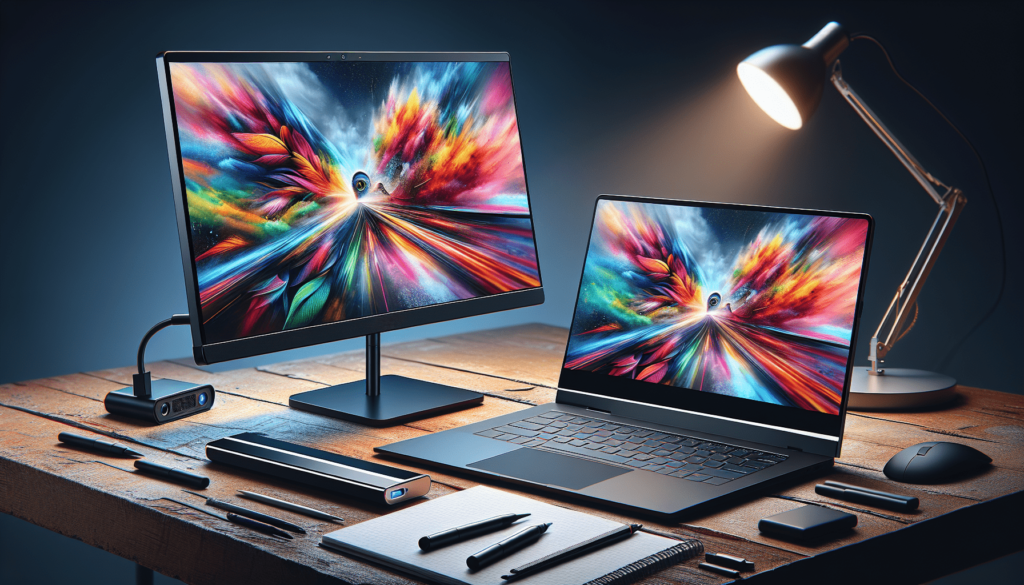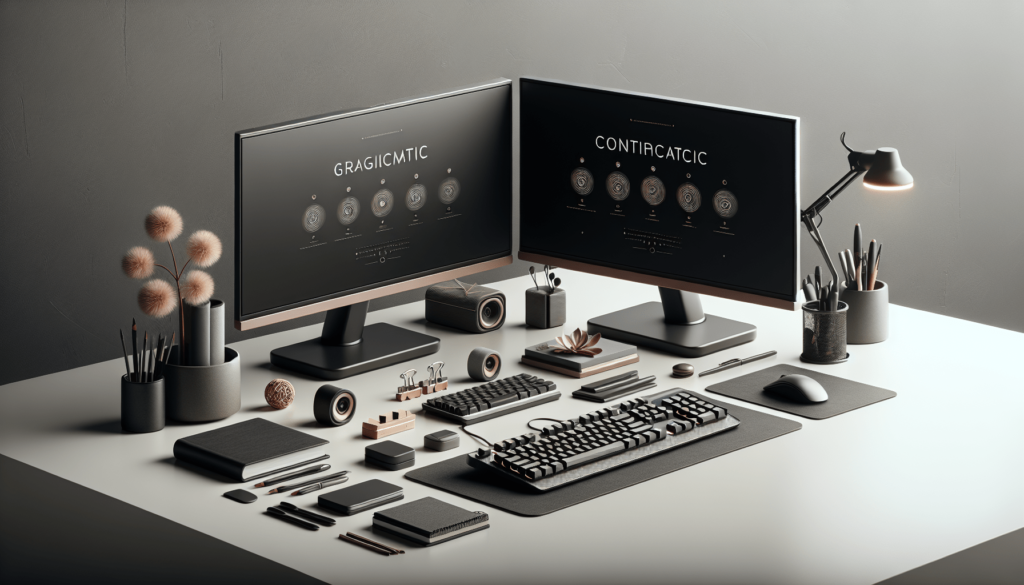Have you ever looked at your computer screen and thought, “How do I get my desktop screen back to normal?” I know I’d be in a bit of a panic if my desktop suddenly went awry. It happens to the best of us: one moment, everything is just peachy, and the next, your icons are scattered, your resolution’s off, or your background looks like something out of an avant-garde art exhibit. Fear not! We’re in this together, and I’m going to walk you through the process of restoring your desktop to its former glory with some friendly guidance and practical tips.
Understanding the Issue
Let’s start with understanding why our desktop screens decide to go rogue. It could range from innocent settings being toggled accidentally to a more complex software glitch. Here are a few common culprits:
- Resolution Changes: Sometimes, the screen resolution changes, making everything look too big or too small.
- Icon Arrangement: Your desktop icons may become disorganized, scattered all over the screen.
- Accidental Changes: Settings might have been changed accidentally, altering the appearance of your desktop.
- Software Updates: Occasionally, software updates may reset or change your display settings.
- Graphic Driver Issues: Outdated or corrupted drivers can mess up your screen display.
By pinpointing what’s gone wrong, we can better target the solution.
Assessing the Desktop Screen Issues
Screen Resolution
The screen resolution affects how much information the display can show. A lower resolution makes everything appear larger, while a higher resolution makes things look smaller but sharper.
Steps to Fix Resolution on Windows:
- Right-click on the desktop.
- Select “Display settings” from the context menu.
- Under “Display resolution,” use the drop-down menu to select the recommended setting.
| Actions | Visual Steps |
|---|---|
| Right-Click | Right-click anywhere on your desktop screen. |
| Display Settings | Select “Display settings” from the drop-down menu. |
| Resolution | Choose “Display resolution” and set it to “Recommended.” |
On macOS:
- Click on the Apple menu.
- Select “System Preferences.”
- Click “Displays.”
- Set the resolution to “Default for display.”
Arranging Desktop Icons
If your desktop icons are scattered like leaves in autumn, you’d want them neatly aligned. Here’s how to tidy them up:
On Windows:
- Right-click on your desktop.
- Hover over “View.”
- Click on “Auto arrange icons” or “Align icons to grid” as per your preference.
| Actions | Visual Steps |
|---|---|
| Right-Click | Right-click on the desktop. |
| View | Hover over “View.” |
| Arrange Icons | Select “Auto arrange icons.” or “Align icons to grid.” |
On macOS:
- Click on the desktop to ensure it’s active.
- Click on “View” in the menu bar.
- Select “Clean Up” or “Clean Up By” to organize icons by a specific criterion (name, kind, date).
Changing Background
Sometimes, the issue is as simple as your desktop background not being what you selected. Here’s how to set it back to normal:
For Windows:
- Right-click on the desktop.
- Select “Personalize.”
- Choose “Background” from the sidebar.
- Select your preferred image, color, or slideshow.
| Steps | Visual Instructions |
|---|---|
| Right-Click | Right-click on your desktop. |
| Personalize | Select “Personalize” from the context menu. |
| Background | Select your desired background. |
On macOS:
- Click on the Apple menu.
- Go to “System Preferences.”
- Click “Desktop & Screen Saver.”
- Choose your preferred background.
Adjusting Scaling
Sometimes the screen looks zoomed in, affecting text and icon sizes. Adjusting the scaling options can help fix this.
On Windows:
- Right-click on your desktop.
- Select “Display settings.”
- Scroll down to the “Scale and layout” section.
- Select the recommended scaling option.
| Actions | Visual Steps |
|---|---|
| Right-Click | Right-click on the desktop. |
| Display Settings | Select “Display settings.” |
| Scaling | Choose the recommended scaling option in “Scale and layout.” |
On macOS:
- Click on the Apple menu.
- Go to “System Preferences.”
- Click “Displays.”
- Select “Scaled” and choose a suitable option.
Checking Graphic Drivers
Sometimes, outdated or corrupted graphic drivers can be the root of your screen issues. Updating them might be the solution you need:
On Windows:
- Open Device Manager by pressing Win + X and selecting “Device Manager.”
- Expand “Display adapters.”
- Right-click on your graphics card and select “Update driver.”
- Choose “Search automatically for updated driver software.”
| Steps | Visual Instructions |
|---|---|
| Open Device Manager | Press Win + X, select “Device Manager.” |
| Display Adapters | Expand “Display adapters.” |
| Update Driver | Right-click graphics card, select “Update driver.” |
| Search Automatically | Choose “Search automatically for updated driver software.” |
On macOS:
- Usually, macOS handles graphics drivers updates through system updates.
- Go to the Apple menu.
- Select “System Preferences.”
- Click “Software Update” to check for available updates.

Preventing Future Issues
Regular System Updates
Regular updates help prevent bugs and compatibility issues that could disrupt your desktop settings. Both Windows and macOS systems generally update automatically, but it’s a good habit to check manually now and again.
For Windows:
- Go to Settings (Win + I).
- Select “Update & Security.”
- Click “Check for updates.”
For macOS:
- Open System Preferences.
- Click “Software Update.”
- Install any available updates.
Backing Up Settings
Backing up your settings ensures that you can restore your desktop configuration if things go haywire.
On Windows:
- Use the built-in “Backup and Restore” feature.
- Go to Control Panel.
- Select “Backup and Restore (Windows 7).”
- Follow the on-screen instructions to set up a backup.
On macOS:
- Use Time Machine for comprehensive backups.
- Go to “System Preferences.”
- Click “Time Machine.”
- Follow prompts to set up and manage backups.
Avoiding Dodgy Software
Sometimes, installing questionable software can tinker with your display settings. Stick to trusted sources and always read reviews before downloading.
Troubleshooting Persistent Problems
Safe Mode
If you’re still having issues despite following all above steps, booting your computer in Safe Mode can be a great way to troubleshoot.
Entering Safe Mode on Windows:
- Restart your computer.
- As Windows starts, press F8 (or Shift + F8 on some systems).
- Select “Safe Mode” from the boot options menu.
On macOS:
- Restart your Mac.
- Hold the Shift key immediately after the startup sound.
- Release when you see the login screen.
Checking for Malware
Malware can cause all kinds of problems with your desktop. Running comprehensive scans can help identify and remove threats.
On Windows:
- Open Windows Security.
- Go to “Virus & threat protection.”
- Click “Quick scan” or “Full scan” for a more thorough check.
On macOS:
- Although less likely, Mac users aren’t immune to malware.
- Use trusted anti-malware software like Malwarebytes.
- Regularly scan your Mac to ensure it remains threat-free.
Resetting Your Operating System
As a last resort, resetting your operating system can be effective. This will return your computer to its original state, so make sure you have backed up important data.
Resetting Windows:
- Go to Settings (Win + I).
- Select “Update & Security.”
- Click “Recovery.”
- Choose “Reset this PC” and follow the prompts.
Resetting macOS:
- Restart your Mac.
- Hold Command + R during startup.
- In the Recovery Mode, select “Reinstall macOS” and follow the on-screen instructions.
Final Thoughts
I get it; it’s downright annoying when your desktop decides to do its own thing, messing up your carefully curated workspace. Whether it’s icon chaos, resolution drama, or an unwanted background, remembering these steps can turn your frustration into a nifty life skill. We’ve all been there, and now you’ve got the know-how to handle these hiccups like a pro. So next time your screen gets all topsy-turvy, you’ll be prepared to ask, “How do I get my desktop screen back to normal?”—and confidently handle the challenge.



